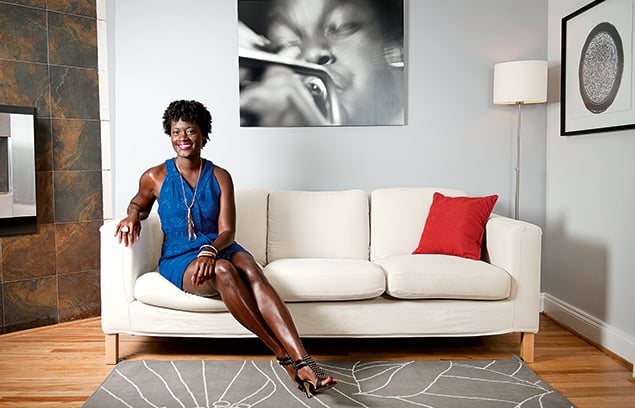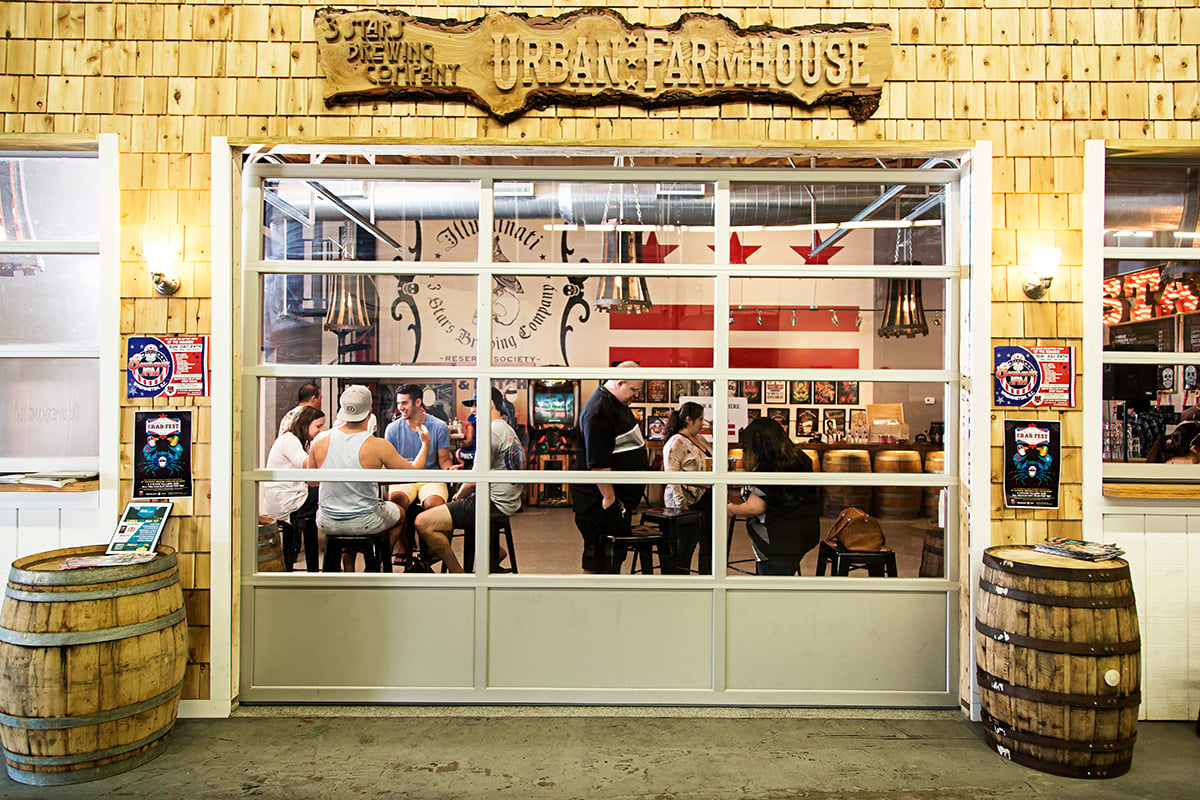When Herbert and Dorothy Vogel bought their first piece of art in 1962, they were unlikely candidates to become great collectors. Herbert, who died last year, was a postal clerk, Dorothy a librarian. They lived in a modest one-bedroom in New York on city-employee salaries. But they amassed one of the most significant collections of modern art, later bequeathed to the National Gallery of Art. What they lacked in income they made up for with an obsessive devotion to seeking out new, exciting work.
The lesson from the Vogels is that owning good art is possible for almost anyone. “Buying art is like developing a taste for wine or music or anything,” says art consultant Jean Efron, who works with individuals and businesses to help them build collections. “It’s all about exposure. The more you look, the more you learn.”
In Washington, there’s no shortage of places to look. In addition to museums, there are numerous galleries showcasing affordable art as well as embassies promoting cultural exchange through exhibits by international artists. The art scene often intersects with another local pastime—philanthropy. “There’s this generation of people between ages 25 and 45 figuring out early in life what makes them happy and what their contribution to the world will be,” says Leigh Conner, co-owner of ConnerSmith, a gallery in DC’s Trinidad neighborhood, and a founder of the (e)merge art fair in Southwest DC. “One of the reasons we started (e)merge was not just to encourage artists and galleries but to encourage collectors. Herbert and Dorothy Vogel are a great example of what can be done when you’re culturally curious and wanting to contribute.”
Whether you’re seeking to establish a significant collection or simply to buy a work or two for your home, the first thing to do is to figure out what kind of art you like. When you visit a museum, notice which pieces you’re drawn to and whether they’re paintings, sculptures, drawings, or other works on paper. If you find yourself lingering in front of a particular photograph or traditional oil painting or abstract, chances are it’s the kind of artwork you’ll get the most pleasure from owning.
Schwanda Rountree, who lives in the District, bought her first piece of art shortly after graduating from law school. Long interested in contemporary art, she fell in love with a large-scale painting by Nigerian artist Victor Ehikhamenor at a local gallery and acquired it for less than $3,000. “That was what sparked it for me,” she says. “Sometimes people might go to someone’s home and see something they like or go to an interesting exhibit at a museum and be inspired.”
Rountree now owns about 30 works and has become so invested in Washington’s art scene that besides practicing law, she has a business helping people establish their collections. “After a while, the galleries started contacting me when they got new and interesting pieces in, and I couldn’t buy everything, obviously,” she says. “So I started trying to connect it with people who were enthusiastic about the work.”
Whether you’re well versed in art or a newcomer, there’s a wealth of information out there. Rountree recommends the magazines Art in America and ArtNews. Online, there are even more resources, from Blouin ArtInfo to the Washington-focused Pink Line Project, founded by art patron and organizer Philippa Hughes. Two good blogs are the Smithsonian American Art Museum’s Eye Level and the Phillips Collection’s Experiment Station.
You can also visit galleries and art fairs and spend time talking to artists and dealers. (See page 146 for a gallery guide.) A great way to see a variety of work in one place is to attend an art fair such as (e)merge, which this year takes place at the Capitol Skyline Hotel October 3 through 6 and showcases work by local, national, and international artists.
The idea for (e)merge was partly born of “Academy,” a show ConnerSmith has hosted for the past 13 years to exhibit work by graduating MFA and BFA artists in Washington and Baltimore. The Corcoran Gallery of Art also hosts an annual exhibit featuring work by students at its College of Art & Design, and universities including American, George Washington, George Mason, and the University of Maryland offer fine-art degrees and often display student work.
Sometimes it can pay to hire an expert. Art consultants such as Efron and Rountree can help navigate unfamiliar terrain. “We guide our customers because it can be overwhelming,” says Efron, who’s now in her 36th year as a consultant in Washington. “We can set up appointments with galleries and artists and help people get started, narrow the field, and make fewer mistakes.” (See page 144 for common errors new collectors make.)
An art consultant will typically sit down with a client to figure out what his or her taste is and go through books and catalogs to get a sense of the kinds of pieces the person is interested in. The consultant usually charges a nominal fee for the initial meeting and a commission on any pieces purchased. One of the most important things to discuss is how much you want to spend on a piece or within a particular time frame. Rountree typically works with pieces that start around $5,000 and go up to as much as $200,000. On tighter budgets, Efron recommends starting with photography and works on paper.
“You can buy a good contemporary photograph from a young photographer for maybe $1,000,” she says. “And a work on paper might be a good place to start because you can spend less than you do on a canvas and get more for your money.”
If you prefer to go it alone, do your research. Visit estate sales, auction houses, and galleries. Look at online vendors. (See sidebar at left.) Attend open houses at studios—Pink Line Project is a great resource for upcoming events. And consider going to art fairs farther afield, such as the Armory Show in New York City or Art Basel in Miami.
Most Washington museums host special events and lectures about art and collecting. It can be worth joining a museum such as the Corcoran or a program like the Phillips Museum’s Contemporaries to gain access to events and artist talks. “There’s a great social aspect to collecting art because you find yourself among people who feel the same way about it as you do,” says Conner. “And it’s another way to contribute to people around you, whether you’re having them over to look at your collection or supporting emerging artists and helping support culture over your lifetime.”
View the entire Art Collecting 101 feature
This article appeared in the September 2013 issue of Washingtonian Magazine.



















